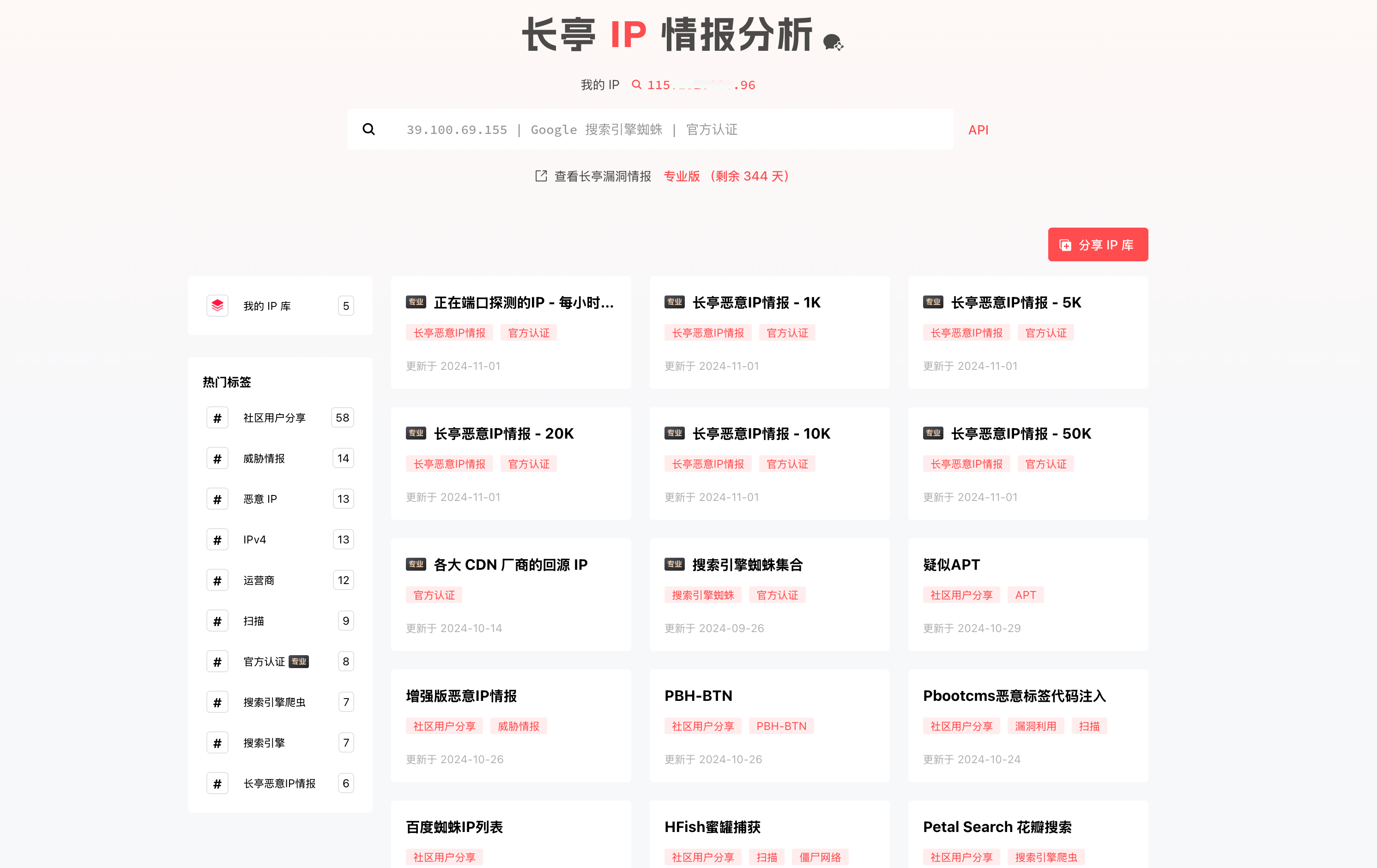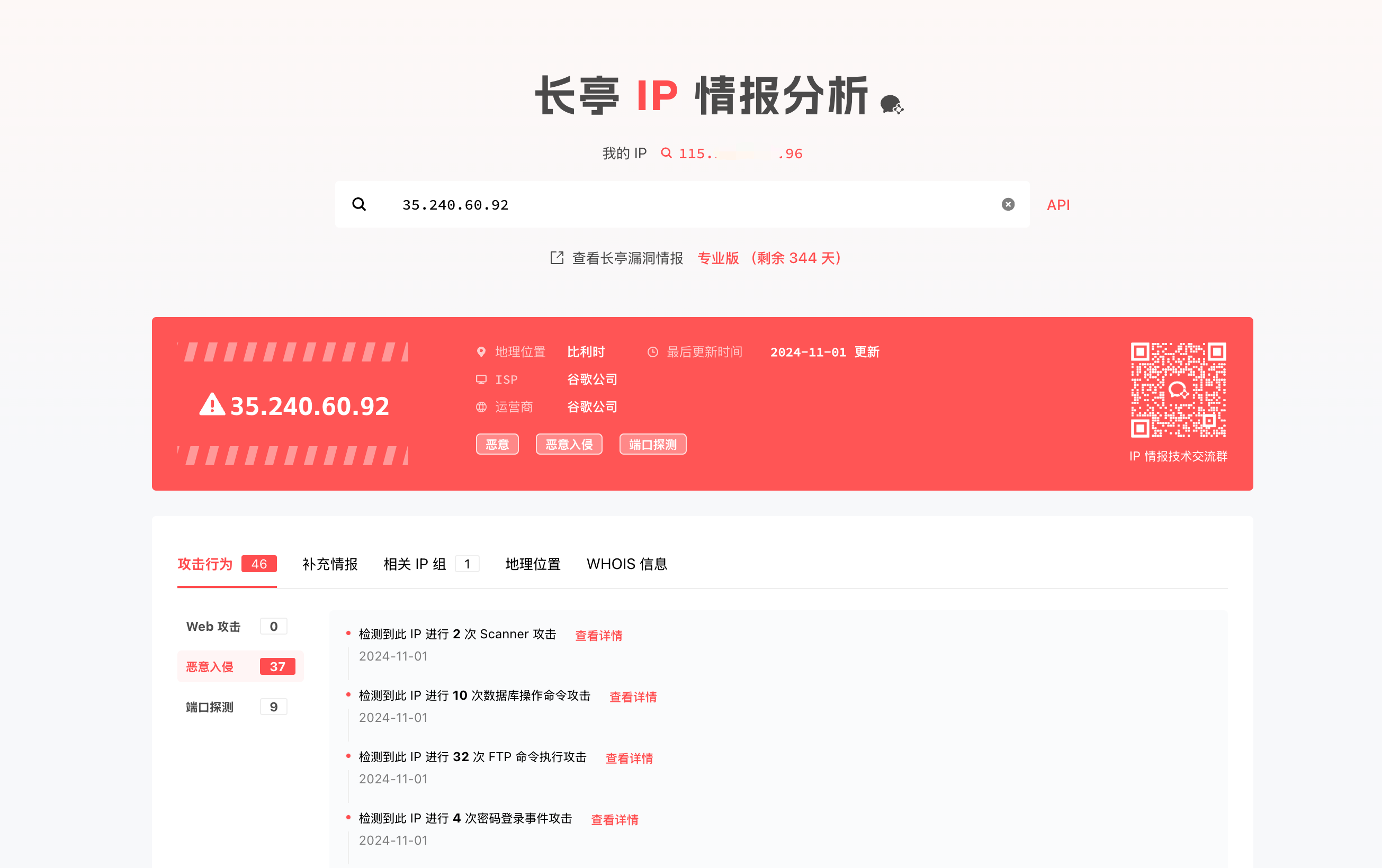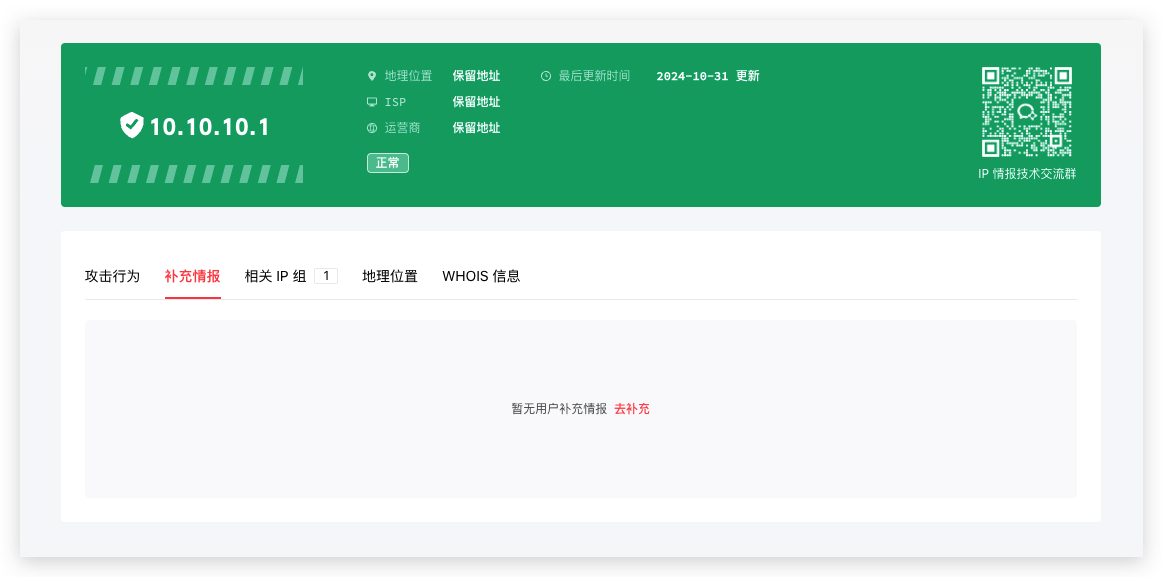

508
0
CrowdSec是一个功能强大的行为检测引擎,CrowdSec当前处于开放源代码状态,能够通过参与式IPS来分析访客行为,并且能够为用户针对各种攻击提供适应性响应。除此之外,CrowdSec还可以利用群组功能生成一个全局CTI数据库,以保护用户网络。

CrowdSec是一个功能强大的行为检测引擎,CrowdSec当前处于开放源代码状态,能够通过参与式IPS来分析访客行为,并且能够为用户针对各种攻击提供适应性响应。除此之外,CrowdSec还可以利用群组功能生成一个全局CTI数据库,以保护用户网络。
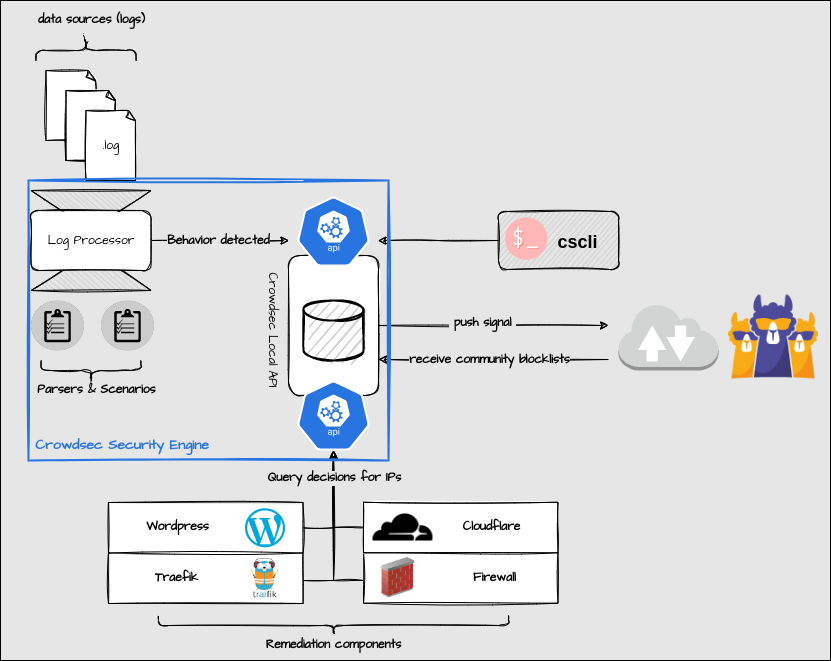



:computer: Console (WebApp) :books: Documentation :diamond_shape_with_a_dot_inside: Configuration Hub :speech_balloon: Discourse (Forum) :speech_balloon: Discord (Live Chat)
:dancer: This is a community-driven project, we need your feedback.
CrowdSec is a free, modern & collaborative behavior detection engine, coupled with a global IP reputation network. It stacks on fail2ban's philosophy but is IPV6 compatible and 60x faster (Go vs Python), it uses Grok patterns to parse logs and YAML scenarios to identify behaviors. CrowdSec is engineered for modern Cloud / Containers / VM-based infrastructures (by decoupling detection and remediation). Once detected you can remedy threats with various bouncers (firewall block, nginx http 403, Captchas, etc.) while the aggressive IP can be sent to CrowdSec for curation before being shared among all users to further improve everyone's security. See FAQ or read below for more.
Installing it through the Package system of your OS is the easiest way to proceed.
Otherwise, you can install it from source.
1curl -s https://packagecloud.io/install/repositories/crowdsec/crowdsec/script.deb.sh | sudo bash 2sudo apt-get update 3sudo apt-get install crowdsec
1curl -s https://packagecloud.io/install/repositories/crowdsec/crowdsec/script.rpm.sh | sudo bash 2sudo yum install crowdsec
sudo pkg update
sudo pkg install crowdsec
1wget https://github.com/crowdsecurity/crowdsec/releases/latest/download/crowdsec-release.tgz 2tar xzvf crowdsec-release.tgz 3cd crowdsec-v* && sudo ./wizard.sh -i
Crowdsec is an open-source, lightweight software, detecting peers with aggressive behaviors to prevent them from accessing your systems. Its user-friendly design and assistance offer a low technical barrier of entry and nevertheless a high security gain.
The architecture is as follows :

Once an unwanted behavior is detected, deal with it through a bouncer. The aggressive IP, scenario triggered and timestamp are sent for curation, to avoid poisoning & false positives. (This can be disabled). If verified, this IP is then redistributed to all CrowdSec users running the same scenario.
By sharing the threat they faced, all users are protecting each-others (hence the name Crowd-Security). Crowdsec is designed for modern infrastructures, with its "Detect Here, Remedy There" approach, letting you analyze logs coming from several sources in one place and block threats at various levels (applicative, system, infrastructural) of your stack.
CrowdSec ships by default with scenarios (brute force, port scan, web scan, etc.) adapted for most contexts, but you can easily extend it by picking more of them from the HUB. It is also easy to adapt an existing one or create one yourself.
CrowdSec is not a SIEM, storing your logs (neither locally nor remotely). Your data are analyzed locally and forgotten.
Signals sent to the curation platform are limited to the very strict minimum: IP, Scenario, Timestamp. They are only used to allow the system to spot new rogue IPs, and rule out false positives or poisoning attempts.
Crowdsec is available for various platforms :
amd64)Or look directly at installation documentation for other methods and platforms.





This repository contains the code for the two main components of crowdsec :
crowdsec : the daemon a-la-fail2ban that can read, parse, enrich and apply heuristics to logs. This is the component in charge of "detecting" the attackscscli : the cli tool mainly used to interact with crowdsec : ban/unban/view current bans, enable/disable parsers and scenarios.If you wish to contribute to the core of crowdsec, you are welcome to open a PR in this repository.
If you wish to add a new parser, scenario or collection, please open a PR in the hub repository.
If you wish to contribute to the documentation, please open a PR in the documentation repository.

长亭科技
8.1k
8
一款足够简单、足够好用、足够强的免费 WAF。基于业界领先的语义引擎检测技术,作为反向代理接入,保护你的网站不受黑客攻击。
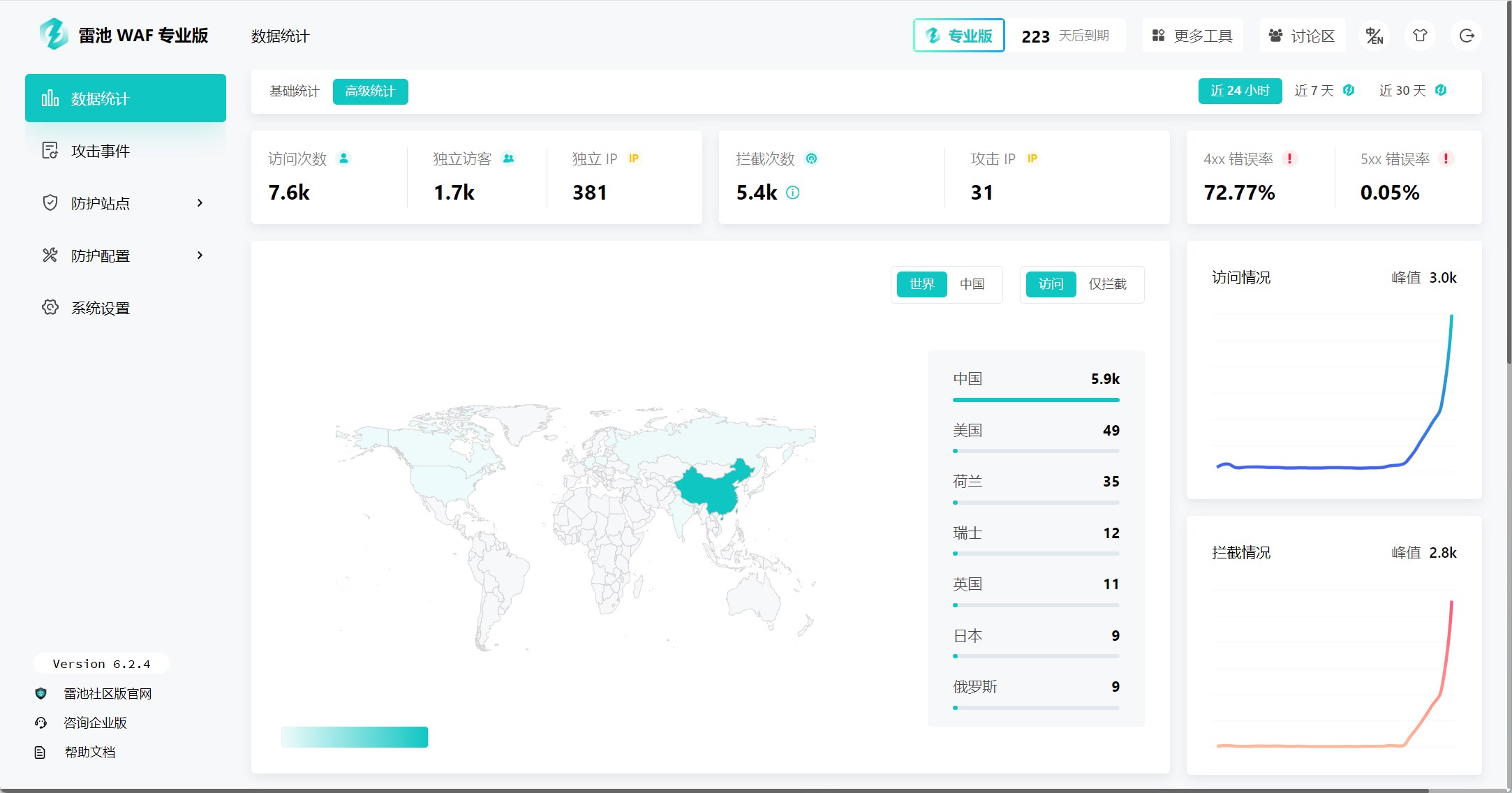
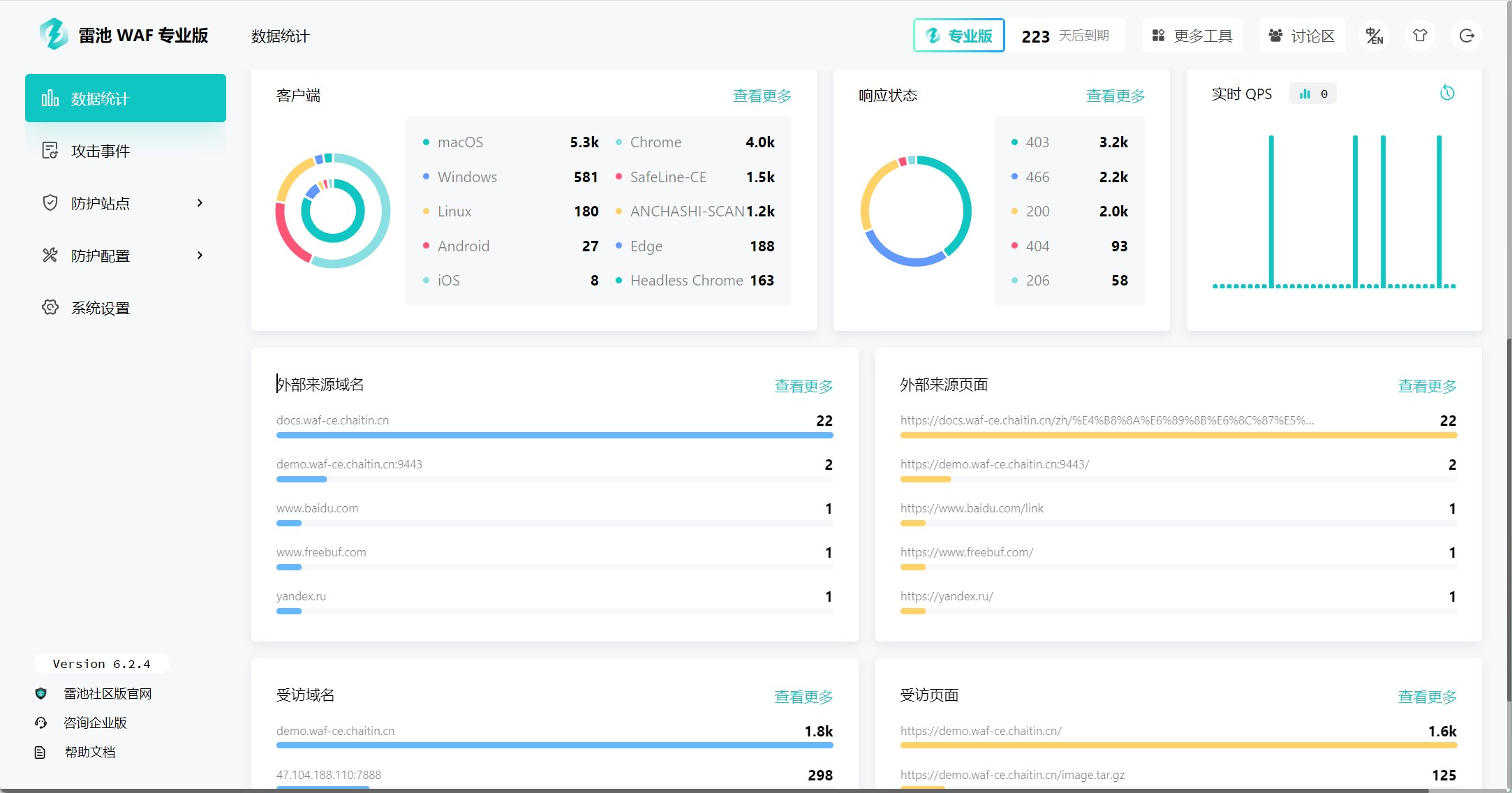

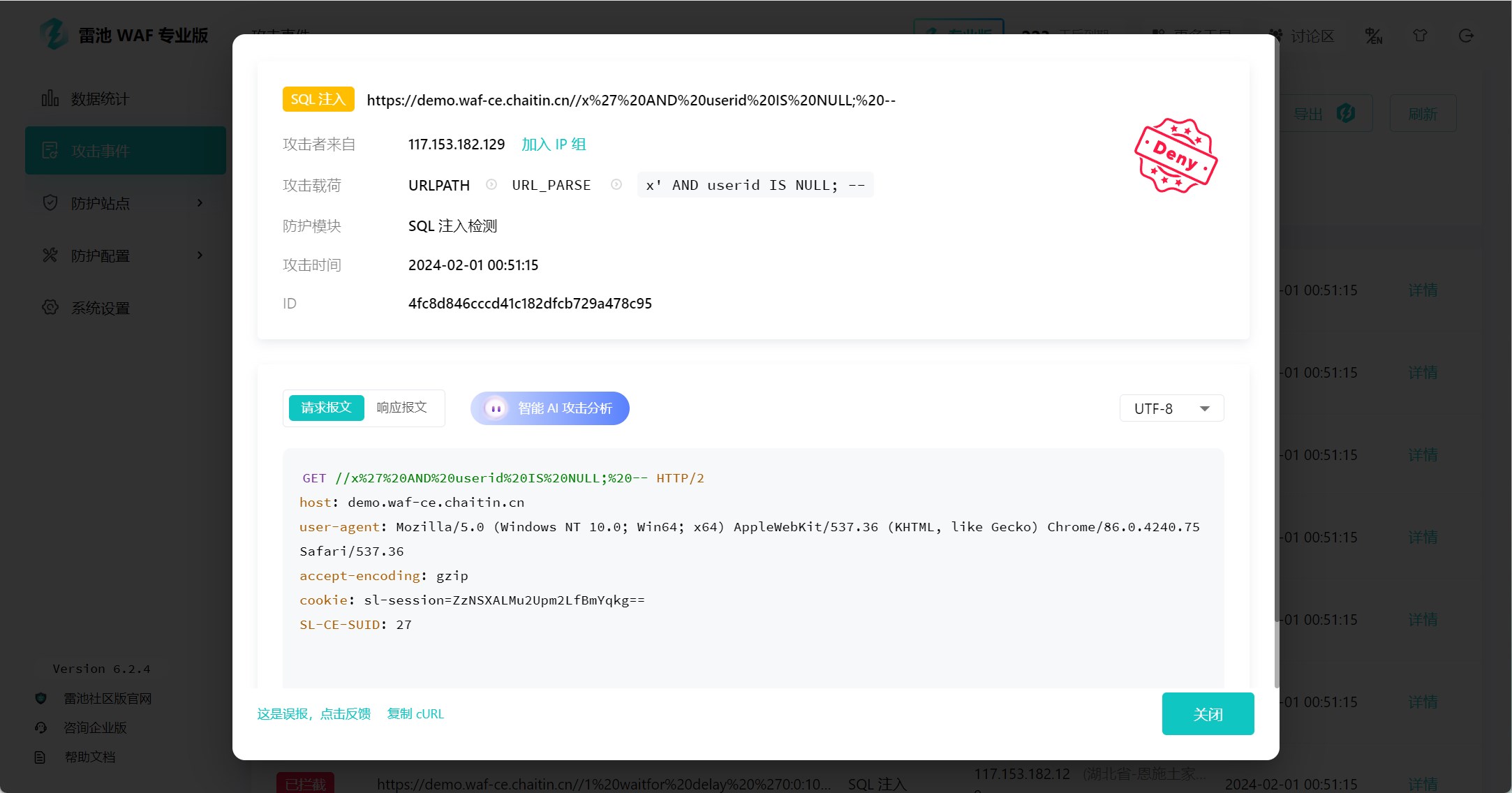

长亭科技
5.8k
3
长亭 IP 威胁情报是一个专业的 IP 威胁情报分析平台,为企业提供全面的 IP 信誉评估服务。
